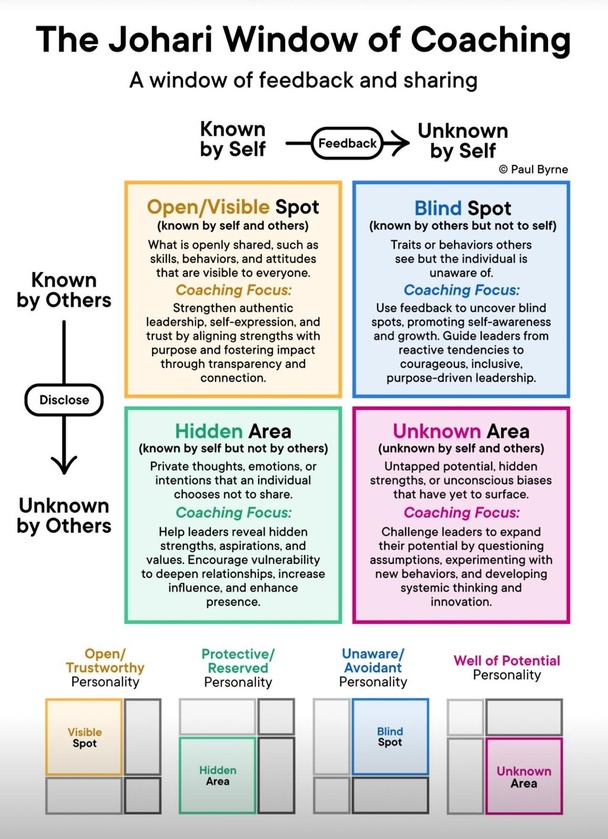When it comes to most workplaces, musculoskeletal disorders (MSDs) among workers present a significant challenge to occupational health as well as productivity. With manual handling tasks, repetitive motions, and prolonged standing inherent in most manual work, employers and safety professionals continuously seek practical interventions to mitigate these risks. Among the available approaches, job rotation stands out as a promising approach. This concept involves systematically moving employees through various tasks, seeking to reduce the monotony of work and the prolonged exposure to specific physical demands associated with MSDs.
However, the effectiveness of job rotation in reducing MSD injuries is more complex. As research goes deeper into this strategy, it reveals that the benefits of job rotation depend heavily on its implementation and the specific workplace context. Factors such as the composition of the job pool, the nature of tasks, and the ergonomic design of workstations play crucial roles in determining the success of job rotation programs.
Using recent studies, we will discuss the variable effectiveness of job rotation, the challenges in its implementation, and the considerations necessary for it to be a part of a comprehensive ergonomic strategy. We hope to provide insights and practical recommendations for managers and safety professionals as you continue to enhance worker health and safety.
Now, let's look at several studies focused on the effectiveness of job rotation and outline their findings:
1: Variable Effectiveness of Job Rotation Based on Job Pool Composition
The study conducted by Mehdizadeh et al. (2020) provides a nuanced understanding of how the composition of the job pool influences the effectiveness of job rotation strategies in mitigating musculoskeletal disorder (MSD) risks. Key points from this study are as follows:
- Effectiveness Reliant on Job Risk Levels: The impact of job rotation on reducing MSD risk hinges significantly on the risk levels of the jobs included in the rotation pool. Including high-risk jobs in the rotation schedule can markedly diminish the overall effectiveness of the job rotation program in reducing worker risk.
- Fatigue-Failure Model Analysis: The researchers utilized a novel optimization framework that incorporated the fatigue failure model of MSD development. This approach involved numerical simulation of job rotation strategies, examining how different job combinations within a rotation schedule can influence MSD risk.
- Case Study with Real Injury Data: The study's findings are grounded in a practical context, including a case study that integrates actual injury data. This aspect adds authenticity and applicability to the conclusions drawn, making them more relevant for real-world industrial settings.
- High-Risk Jobs Diminish Rotation Benefits: A crucial observation was that when the job pool contains tasks with significantly higher physical risk factors, the rotation's effectiveness in lowering overall worker MSD risk is substantially reduced, which suggests that other intervention strategies might be more effective in such scenarios.
- Primary Focus on Job Redesign: The study emphasizes that when high-risk jobs are present in the job pool, the primary focus should shift towards redesigning these high-risk tasks. This approach can be more effective than relying solely on job rotation to mitigate MSD risks.
- Consideration for Ergonomic Intervention: This insight underlines the importance of a comprehensive ergonomic intervention strategy, where job rotation is just one component. Employers and safety professionals should critically assess the risk levels of individual jobs and consider job redesign or other ergonomic interventions in conjunction with job rotation.
This study illustrates that the success of job rotation in reducing MSD risks is not universal and is largely contingent upon the specific mix of tasks within the rotation. High-risk jobs can notably undermine the effectiveness of rotation schemes, suggesting a need for a more holistic approach to workplace ergonomics and safety planning.
2: Limited Impact of Job Rotation on Work-Related MSDs
The 2017 study by Comper et al. provides critical insights into the limitations of job rotation as a means to prevent work-related musculoskeletal disorders (MSDs). Key aspects of this study include:
- Context of the Study: Conducted in the textile industry, this research was set in a real-world manufacturing environment. The study was designed as a 1-year cluster randomized controlled trial, providing a robust methodological approach to evaluating the effectiveness of job rotation.
- Comparative Analysis with Control Group: Both the intervention group (which performed job rotation) and the control group received ergonomic training, allowing for a direct comparison of the added value of job rotation over standard ergonomic practices.
- Primary Outcome - Sick Leave Due to MSDs: The primary measure of the study's effectiveness was the number of working hours lost due to sick leave resulting from musculoskeletal diseases. This outcome directly indicates the physical impact of job rotation on worker health.
- Secondary Outcomes - Various Work-Related Factors: The study also examined several secondary outcomes, including musculoskeletal symptoms, risk factors for musculoskeletal diseases, psychosocial factors, fatigue, general health, and productivity. These factors offer a comprehensive view of the potential benefits of job rotation.
- Lack of Significant Difference in Primary Outcome: The key finding was no significant difference in the number of working hours lost due to MSD-related sick leave between the job rotation group and the control group at the 12-month follow-up, which suggests that job rotation, in this context, did not effectively reduce the incidence of musculoskeletal diseases.
- No Significant Impact on Secondary Outcomes: The study found no significant differences between the job rotation and control groups regarding the secondary outcomes, including the prevalence of musculoskeletal symptoms and perceptions of musculoskeletal pain and workplace risk factors.
- Implications for Job Rotation Effectiveness: These findings challenge the notion that job rotation is an effective standalone method for reducing the prevalence of musculoskeletal symptoms or improving worker perceptions of musculoskeletal pain and workplace risk factors.
- Recommendation for Future Research: The study's results underscore the need for further research to explore the conditions under which job rotation might be more effective and whether different designs of job rotation programs could yield better outcomes in preventing work-related MSDs.
Comper et al.'s (2017) study provides convincing evidence that, in the context of the textile industry, job rotation did not significantly reduce the incidence of musculoskeletal diseases or improve related health perceptions and workplace factors, thus questioning its efficacy as a sole intervention for preventing work-related MSDs.
3: Effect of Job Rotation on Muscular Activity Variability
The Rodriguez & Barrero, 2017 study explains the relationship between job rotation strategies and muscular activity variability (MAV), hypothesized to reduce the risk of musculoskeletal disorders (MSDs). Key points from their research are:
- Focus on Muscular Activity Variability: The study investigates how job rotation strategies influence MAV, an important ergonomic factor, as increased variability in muscular activity is believed to reduce the risk of MSDs.
- Analysis of Various Job Rotation Strategies: The research encompassed various job rotation strategies, including task alternation and pace changes, to determine their impact on MAV. This comprehensive approach offers insights into the effectiveness of different rotation types.
- Increased MAV with Certain Strategies: Several studies in the review supported the notion that job rotation can increase MAV. This finding is crucial as it suggests that job rotation can positively influence muscular activity patterns when designed appropriately.
- Uncertainty in Direct Benefits for Workers: Despite the increase in MAV, the study found limited evidence that these changes in variability immediately translate into tangible benefits for the worker, which raises questions about the direct correlation between increased MAV and reduced MSD risk.
- Variability Achieved at the Expense of Average Activity: The study noted that in some cases, increased variability was achieved at the cost of increased average activity in the assessed muscles, which could negate the benefits of increased variability, indicating a need for careful design of job rotation schedules.
- Lack of Simultaneous Changes in Different Muscle Groups: There was little evidence that increased MAV due to job rotation led to simultaneous changes across different muscular groups. This lack of uniformity in the benefits of job rotation across various muscle groups is significant for assessing its effectiveness in reducing MSD risks.
- Implications for Job Rotation Design: The study's findings suggest that while job rotation can potentially increase MAV, you must carefully consider the implementation to ensure that it does not inadvertently increase the risk of MSDs. The design of rotation schedules should view the balance between increasing variability and avoiding excessive strain on any particular muscle group.
The study by Rodriguez and Barrero (2017) highlights the complex relationship between job rotation and muscular activity variability. While job rotation can increase MAV, which is theoretically beneficial in reducing MSD risk, the actual benefits for workers regarding reduced MSD prevalence are not definitively established. These findings underscore the need for a nuanced approach to implementing job rotation strategies, considering both the potential benefits and the challenges in achieving effective MSD risk reduction.
4: Inconsistent Evidence on Job Rotation Effects
The 2015 systematic review by Priscilla C. Leider et al. critically evaluates the effects of job rotation on musculoskeletal complaints, related work exposures, and sustainable working life parameters. This review provides an insightful perspective on the current state of evidence regarding job rotation:
- Systematic Review Approach: The study systematically collated and analyzed existing research, providing a comprehensive overview of the evidence on job rotation's impact on musculoskeletal complaints and related exposures.
- Mixed Results in Reducing Musculoskeletal Complaints: The review found mixed outcomes regarding the effectiveness of job rotation in reducing musculoskeletal complaints. Some field studies reported positive results, while others showed negative or inconsistent results, highlighting the need for a clear consensus in the research community.
- Varied Effects on Work Exposures: Similar variability was observed in the effects of job rotation on exposures related to musculoskeletal complaints. While some studies reported positive changes, others showed inconsistent outcomes, underlining the complexity of the relationship between job rotation and work exposures.
- Inconsistent Evidence across Studies: The review underscored that the evidence for positive or negative effects of job rotation is inconsistent. This inconsistency is attributed to the diversity in study designs, work environments, and the specific implementation of job rotation programs.
- No Studies on Sustainable Working Life Parameters: The review found no studies focusing on sustainable working life parameters. This gap indicates an area for future research to explore the long-term impacts of job rotation on workforce sustainability.
- Lack of High-Quality, Longitudinal Studies: The review points out the need for more high-quality, longitudinal studies to better understand job rotation's long-term effects and address existing research's limitations, which often rely on cross-sectional designs.
- Need for Comprehensive Assessment: The findings suggest that employers and practitioners undertake a comprehensive assessment of job rotation's potential benefits and drawbacks, including considering the specific nature of work activities, the physical demands involved, and the individual characteristics of workers.
- Recommendations for Future Research: The review emphasizes the need for future research to adopt more rigorous methodologies, consider a broader range of outcomes, and explore the conditions under which job rotation might be most effective.
Leider et al.'s (2015) systematic review reveals inconsistent evidence regarding the efficacy of job rotation in mitigating musculoskeletal complaints and exposures. This inconsistency highlights the need for a cautious and tailored approach when considering job rotation as an occupational health and safety strategy. It also highlights the importance of further research to clarify its role and effectiveness.
5: Job Rotation Design Considerations
The 2020 study by J. Diego-Mas offers valuable insights into designing effective job rotation schedules to prevent work-related musculoskeletal disorders (MSDs) while considering ergonomic risk factors. The study's key aspects include:
- Complexity in Developing Rotation Schedules: Job rotation is a widely accepted administrative solution to prevent MSDs. However, designing effective rotation schedules is complex due to the multifactorial nature of musculoskeletal disorders and the constraints of working environments.
- Evolutionary Algorithm for Rotation Schedules: The study introduces an evolutionary algorithm to generate rotation schedules. This algorithm aims to optimize multiple ergonomics criteria by clustering tasks into rotation groups, selecting appropriate workers for each group, and determining the rotation sequence to minimize fatigue effects.
- Reducing Prolonged Risk Exposure: A significant goal of the algorithm is to minimize prolonged exposure to ergonomic risk factors related to musculoskeletal injuries, which is achieved by rotating workers through various tasks, varying their exposure to risk factors.
- Simplifying Task Assignment and Monitoring: The approach simplifies the assignment of workers to different tasks during each rotation, which not only aids in reducing the potential for injury but also facilitates the monitoring and managing of job assignments.
- Consideration of Fatigue in Rotation Design: The algorithm incorporates considerations of worker fatigue, an important factor in developing MSDs. By optimizing the sequence of rotations, the algorithm aims to minimize the cumulative effects of fatigue over the workday.
- Balancing Ergonomics and Productivity: The study recognizes the need to balance ergonomic safety with productivity requirements. The proposed procedure addresses this by ensuring that rotation schedules are not only ergonomically sound but also feasible within the operational constraints of a workplace.
- Adaptability to Various Work Environments: The procedure presented in the study can be adapted to different work environments, making it a versatile tool for designing job rotation schedules in various industrial contexts.
- Implications for Ergonomic Intervention Strategy: The findings from this study imply that an effective job rotation strategy should be part of a broader ergonomic intervention. This strategy should consider not just the physical rotation of tasks but also the ergonomic design of each task to ensure that rotation does not simply shift risks from one group of workers to another.
The study by Diego-Mas (2020) underscores the importance of carefully designing job rotation schedules to prevent work-related musculoskeletal disorders effectively. Using advanced algorithms to consider multiple ergonomic factors offers a more systematic and effective way of implementing job rotation in various industrial settings.
6: Lack of Significant Risk Reduction in High-Risk Jobs
The study by Gallagher et al. (2018) provides a critical evaluation of the effectiveness of job rotation in reducing the risk of musculoskeletal disorders (MSDs), particularly in high-risk jobs. Here are the key elements of this study:
- Job Rotation as a Common Industrial Strategy: The study addresses the widespread use of job rotation in industries to mitigate the risk of MSDs. However, it questions the efficacy of this technique in reducing risk.
- Use of the Lifting Fatigue Failure Tool (LiFFT): The researchers employed the LiFFT, a tool developed for assessing cumulative loading and MSD risk, to evaluate the impact of different job rotation strategies, which allowed for a more objective and quantitative analysis of the risks associated with various job rotation schemes.
- Analysis of Simulated Job Rotation Scheme: The study involved a simulated job rotation scheme that included high, medium, and low-risk lifting jobs. This simulation provided insights into how different combinations of job risks in a rotation schedule might affect overall MSD risk.
- Finding: Increased Risk in All Jobs: Contrary to the expectation that job rotation would distribute risk and reduce the likelihood of MSDs, the study found that the rotation strategy ended up creating three jobs that were all high risk, suggesting that rotation may not effectively mitigate risk, especially in scenarios involving high-risk tasks.
- Implication: Redesign High-Risk Jobs First: The study highlights the importance of addressing high-risk jobs directly through job redesign rather than relying solely on job rotation as a risk mitigation strategy. Redesigning high-risk tasks is a more effective approach to reducing overall MSD risk.
- Consideration of Risk Equity: The study's findings imply that while job rotation might somewhat reduce the risk for the most hazardous job, it could simultaneously increase the risk for other workers in the rotation pool, raising concerns about risk equity.
- Recommendation for Comprehensive Risk Management: The results advocate for a more comprehensive risk management strategy beyond job rotation. It suggests integrating job rotation with other ergonomic interventions, such as task redesign and administrative controls, to effectively manage MSD risks.
- Need for Customized Approaches: The study underscores that a one-size-fits-all approach to job rotation may not be effective, especially in environments with varied risk levels across tasks. Customized rotation schedules that consider the specific risk profile of each job are crucial.
Gallagher et al.'s (2018) study provides valuable insights into the limitations of job rotation in reducing MSD risks, particularly in environments with high-risk jobs. It emphasizes the need for a more holistic approach to ergonomic risk management that includes, but is not limited to, job rotation.
The collective research on job rotation to mitigate musculoskeletal disorder (MSD) injuries presents a complex and multifaceted picture. Several key factors influence the effectiveness of job rotation, and its impact varies depending on the specific context and implementation.
Let's summarize the significant findings from these various studies and provide specific recommendations for practitioners in the field.
- Variable Effectiveness Based on Job Pool Composition: Mehdizadeh et al. (2020) highlight that the effectiveness of job rotation in reducing MSD risks is highly contingent on the composition of the job pool. Including high-risk jobs in the rotation significantly diminishes its effectiveness. In environments where high-risk jobs are unavoidable, the focus should shift towards redesigning these high-risk tasks rather than relying solely on job rotation.
- Limited Impact on Work-Related MSDs: Comper et al. (2017) found that job rotation did not significantly reduce work-related musculoskeletal diseases, suggesting that job rotation alone may not be a sufficient intervention. Practitioners should consider integrating job rotation with comprehensive ergonomic training and other preventive measures.
- Effect on Muscular Activity Variability: Rodriguez and Barrero (2017) demonstrate that while job rotation can increase muscular activity variability, this does not necessarily translate into a reduced risk of MSDs. Employers should design rotation schedules that increase variability and ensure that it does not lead to increased average activity in the muscles, which could be counterproductive.
- Inconsistent Evidence on Job Rotation Effects: Leider et al. (2015) point out the inconsistent evidence regarding the impact of job rotation on musculoskeletal complaints and exposures, which suggests the need for a tailored approach to job rotation, considering specific workplace conditions and individual worker characteristics.
- Job Rotation Design Considerations: Diego-Mas (2020) emphasizes the importance of using advanced algorithms and ergonomic criteria in designing job rotation schedules. An effective rotation schedule should consider various ergonomic factors, reduce prolonged exposure to specific risks, and balance the needs of productivity and worker safety.
- Lack of Significant Risk Reduction in High-Risk Jobs: Gallagher et al. (2018) indicate that job rotation, especially in high-risk jobs, may not effectively mitigate risk and could inadvertently create high-risk scenarios for all workers involved. This finding underscores the importance of assessing each job's risk profile before implementing a rotation schedule.
Specific Recommendations and Examples:
- Comprehensive Risk Assessment: Conduct a thorough risk assessment of all tasks before implementing job rotation. For example, identify tasks with high repetitive strain or heavy lifting and consider these in designing the rotation schedule.
- Customized Rotation Schedules: Develop customized rotation schedules that consider the specific risks and demands of different tasks - for instance, alternate between tasks requiring other muscle groups or varying levels of physical exertion.
- Integrate with Ergonomic Training: Combine job rotation with ergonomic training. Employers must train workers in performing different tasks, safe work practices, and ergonomic principles.
- Task Redesign and Automation: Explore opportunities for task redesign or automation in high-risk tasks. For example, if lifting heavy objects is high-risk, consider using mechanical aids or redesigning the workflow to minimize manual handling.
- Monitor and Evaluate: Continuously monitor the effectiveness of job rotation programs and be prepared to make adjustments. Gather feedback from workers and use injury and illness data to assess the impact of the rotation schedule.
- Holistic Ergonomic Approach: View job rotation as part of a broader ergonomic and workplace safety strategy. Incorporate other elements such as workstation design, administrative controls, and worker wellness programs.
While job rotation can be valuable in reducing MSD injuries, its effectiveness is only sometimes universal. It depends on careful planning and integration with other ergonomic and safety strategies. A holistic approach that includes job rotation, task redesign, ergonomic training, and continuous evaluation is essential for effectively mitigating MSD risks in the workplace.
What has been your experience with job rotation as a solution for MSD injuries? Join in on the conversation over at The SafetyPro Podcast community site today!

Blaine J. Hoffmann has been in the occupational safety & health industry for over 28 years and is the author of "Rethinking SAFETY Culture," available now. Blaine is the producer and host of The SafetyPro Podcast and founded the SafetyPro Podcast community site.




















